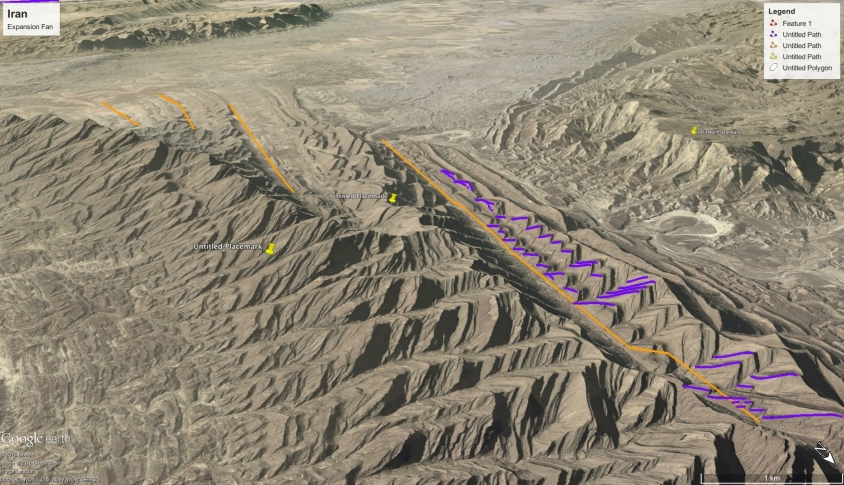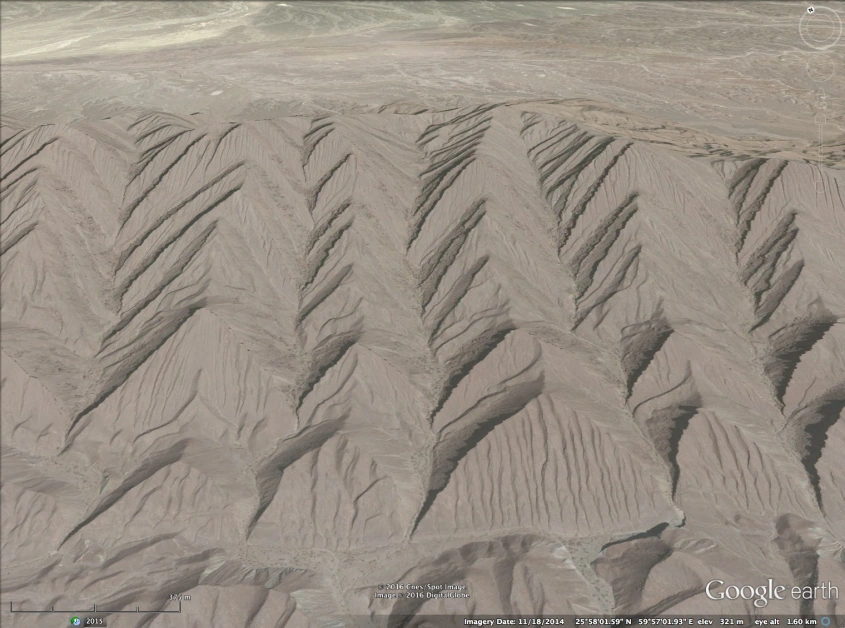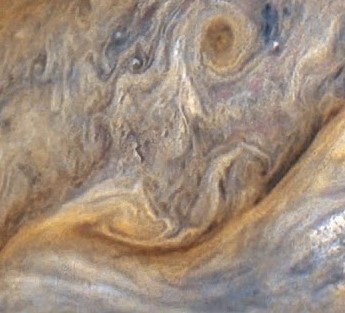The Great Red Spot
In Part five of this series we looked at “boot print” craters and found there are cyclones raging on Jupiter right now that can explain them. Shock wave patterns in the crater rims provided confirming evidence. We also looked at California’s mountain and valley structures and correlated those with a storm on Jupiter that displays in great detail the very same features. The examples we’ve looked at point to one significant observation: that fractal forms associated with the processes of charge diffusion can be found in both geology and weather.
Why geology and weather should match really isn’t hard to understand. Capacitance between Earth and sky are responsible for that, forcing charge to diffuse through each layer in mirror image. And that should suffice for an answer if our atmosphere were considered a plasma; charged particles responding to Earth’s spherical capacitance would make sense. But Earth’s atmosphere isn’t considered a plasma. Neither is Jupiter’s for that matter. Where are all the charge carriers?
The answer isn’t in particle physics. It’s in the molecule of water. Water is the charge carrier – the electric wires of the circuit. Water is bi-polar, and so adopts polarity in an electric field. This produces something called “bound current”. Unlike a current of free electrons and ions, a bound current is carried by a bulk material that can be polarized or magnetized. An example is a ferro-magnetic fluid that takes structural form in response to magnetic fields. Water is an example of bound current due to polarization of the water molecule.
Water also changes phase: from vapor to droplet to ice crystal, all in the course of a weather cycle, which changes it’s electrical properties. And it’s self ionizing, readily shedding electrons to generate plasma.

A cold plasma is only partly ionized. A few free electrons and ions floating about. But magnetic fields are created with any moving charge and magnetic fields influence their motion. And water follows, because it polarizes and acts like a big fat charged particle, making clouds into conduits of current generating a stronger magnetic field. Star-like filaments and concentric rings form in thin cirrus of the upper atmosphere. Condensate filaments make turns and shoot tendrils at 90 degrees, crossing other filament paths and interfering in herringbone patterns. These are drift currents, responding to the pull of far-field potential within that layer of strata.






Closer to the ground, fat water clouds form cellular structures, often in tetrahedron shapes, which amplifies waters polarity to a macro-scale. Watch puffy cumulus gather for a storm, ultimately knotting into a torus around up-welling winds to birth a meso-cyclone, and you are seeing a fractal, electromagnetic structure of Nature at work.

Airborne dust, pollen, aerosols and dander cloud the air close to the ground and react between surface and sky to form a charged sheath, polar opposite to the water clouds in the sky. Higher up, where ice forms, wispy cirrus change polarity again. The result is multiple layers of charged cold plasma between the ionosphere and Earth’s surface.
The sky is electric, but consensus science doesn’t seem to recognize that. They will say there is no evidence of charge densities high enough for plasma. That distances are too large to create double layers and develop capacitance. But they don’t recognize water’s role, and frankly, they aren’t looking. They are looking for answers to their preconceived notions about carbon’s minor role in all this, and don’t even ask the right questions.
Just look at the clouds and what you see is an electric-field writ large across the sky:




It really couldn’t be more obvious. Just ignore the scientists and use your own noggin. It’s better if you’re not institutionally taught to ask the wrong questions.
Then take a look at Google Earth, and compare to NASA’s images of Jupiter. You will see all the patterns of Jupiter’s storm clouds reflected in Earth’s geology.
Mountain ranges, and desert dunes carry the shape of the winds that formed them. Rising columns, violent down-bursts, precipitation, whirlwinds and lightning brushed the land like a painter and left indelible brush stokes.

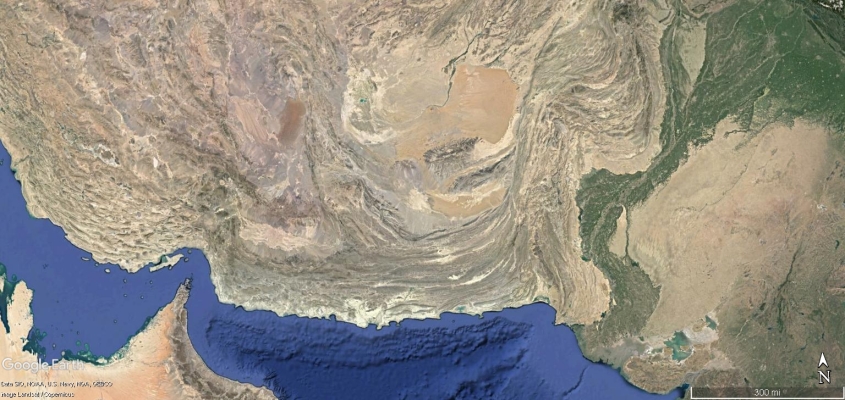


The similarity of shapes and weather comes from internal circuitry of the planets. This means that Jupiter and Earth are very similar in that regard. Repeating forms at different scales is one proof of a fractal process.
Fractals emerge naturally in chemistry, fluid dynamics and biology, but the process that defines them all – the common denominator – is the process of charge diffusion in an electromagnetic field. It manifests not only at the particle scale, but the atomic, molecular and cellular scale, and produces fractal forms at the macro-scale because they are made coherent with electro-magnetic fields.
The Eye of the Storm
Now let’s raise the voltage a bit and see what happens. A correlation between the Colorado Plateau and the Great Red Spot (GRS) has similarities of such complexity and detail, it seems absolutely surreal. Inflow to the GRS appears in two sinuous lanes of rolling winds that correlate with the mountain ranges in the Pacific Northwest.


The Great Basin Vortex
These snaking flows of wind feed a giant thunderhead that occupies the lower third (in the image shown) of the GRS, where white anvil clouds obscure what’s below. Such a meso-cyclone careened over the Great Basin, extending it’s entire rotating wall-cloud clear to the ground. The Great Basin was formed by rippling waves of dust laden winds spun beneath a 100 mile-wide funnel, lashed by torrents of rain.

The parallel rows of basin and range mountains that march like rippling dunes across Nevada were laid transverse to the wind. In the annotated image, wind-fronts are denoted by the dark blue lines. There is an “S” shaped range at the inflection point where the in-flow winds bent to the rotating updraft.

The blue and violet lines denote the wind direction, exiting right (east) at high altitude over Provo, Utah where it made no mark on the land – until it water-fell on the other side of the shear zone that formed the Wasatch Range, spilling a violent downdraft into the Uinta Basin.
Another, larger flanking downdraft flows south over the Wasatch shear zone, and spills down to form the Mogollon Rim, the southern extension of the Colorado Plateau arcing south-east from, roughly, the Kiabab rim of the Grand Canyon to the Gila River in New Mexico. The wind formed rim is intermixed with volcanoes.
Curiously, Nevada’s mountains display wind-formed tetrahedrons in the opposite direction than expected, given the counter-clockwise rotation of the GRS. I drove through Nevada (twice) to confirm what Google Earth showed, because this was a case where land forms disagreed with my expectation. The best explanation for this, given everything in context, is that ground level eddy winds rolled beneath the meso-cyclone rotation like roller-bearings under a spindle.

This was a wet, rotating meso-cyclone, carrying considerable moisture which precipitated out and evaporated forming salt basins behind ranges, and culminating in a rain curtain over what is now the Great Salt Lake and Bonneville Salt Flats.
The long, linear mountain ranges of the Great Basin are in many cases windswept dirt. Hard rock, which indicates heat and recombination of ionic matter is absent, or minimal in many cases which indicates low density lightning in this region. The triangular faces of shock wave reflections earmark wind direction. Often, no triangular shock features are present, indicating subsonic flow, so many hills take a recognizable sand-dune shape.





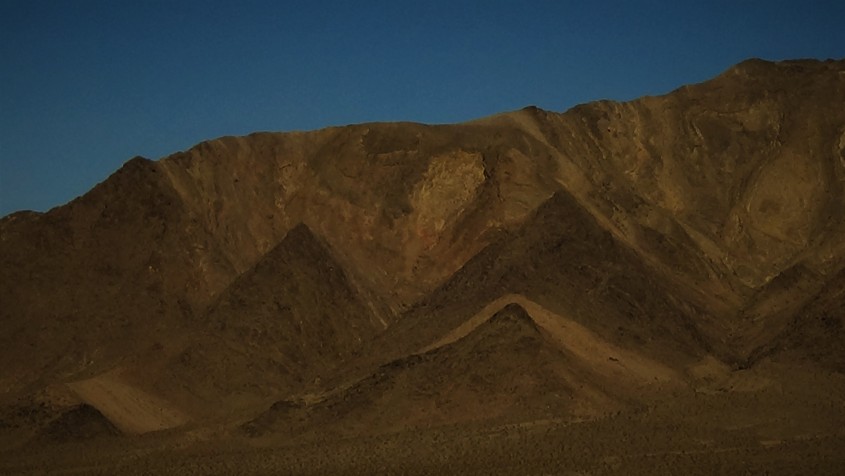

The Wyoming Vortex
Where the thunderstorm down-drafted to the northeast, it landed in the Uinta Valley and joined the ground winds of another rotation. Actually, it’s two primary rotations that suck wind from the north to form enormous pressure ridges perpendicular to the wind direction: the Wind River and Uinta Mountains.
The mountain ranges formed as lightning arced to ground and charge diffused across the land in channeled currents, which formed dikes. Dikes are walls of rock formed from the country rock fused together, and often display troughs alongside where material sucked to the current.


An example is the Teton’s, where Grand Teton itself is a lightning generated fulgurite surrounded by smaller fulgurites blanketed with wind driven dunes. The Teton fulgurite extended a dike to the south which collected dust against it, which drew more lightning to it, creating a mountain lobe.


Wind piled material against dikes to build a mountain lobe, and leave one flank patterned with the sonic shock of the wind. Winds deflecting horizontal to vertical left ruler straight ridge lines of tetrahedrons where shock reflections patterned diamond shaped regions of expansion and compression.

The wind was pulled by twin whirlwinds created by a grounded current loop. It’s footprint is a dome and crater pair. Dome and crater pairs are created by what I call a coronal loop, because electrically it’s the same as a prominence on the Sun. It’s a ring current coupled to the land, and wind sucks up one side in a meso-cyclone that leaves a dome, walled by inward pointing shock-wave tetrahedrons. The wind loops from the thunderhead anvil to feed the center of a down-drafting cyclone, the footprint of which is a crater with outward pointing tetrahedrons.

This pair is squished into almost polygonal shapes because it’s pressed between larger rotations. The Wyoming Vortex is the smallest of three primary vortexes of the larger multi-vortex storm in the GRS. It isn’t apparent in Jupiter’s clouds, but I suspect it’s there under the anvils.



Kinky Mexico
From the south, hot dry winds scorched across Mexico and the American southwest with counter-flowing winds. Along the turbulent shear zone between, kinks appear in the Sierra Madre Oriental, where north flowing jet streams mixed with a south flowing stream that formed the Sierra Occidental and the alto-Plano in between.
The kinks in Mexico’s cordilleras match remarkably well the kinks of turbulence where inflow and outflow winds mix adjacent to the GRS. That’s probably an understatement. There are details here to fill a book, but take a close look on Google Earth at these kinks to see some amazing wind and shock wave features.

Colorado Plateau and the Eye of the Storm
We looked in an earlier episode at the overall morphology of winds in the very eye of the GRS and the Colorado Plateau. Let’s take an even closer look.

The ‘eye’ is a multiple vortex cyclone, which displays a complex system of coronal loops that twist the wind into a crocheted doily pattern.
There are several paired updraft domes and downdraft craters centered on the Colorado Plateau and Rocky Mountains. The most distinctive is the San Rafael Swell in central Utah.
The Swell is ringed by the explosively charged, dense region of recombination and magnetic pinch known as the San Rafael Reef, where rows of dragon’s teeth – tetrahedral monoliths of hard, fused sandstone – provide evidence of a shock wave at the boundary of the updraft.

The Reef is the rim of an updraft dome formed beneath an intense coronal-loop that raged electrical havoc on the land at the sharp end of the storm. The dome behind is shaped like one lens of an eyeglass, the other lens an inverse copy made by the downdraft of the same loop.



The downdraft crater has a central peak of lightning struck mountains where material drew up in winds generated by the return stroke of the lightning. The rim of the crater forms Capitol Reef, where more monolithic tetrahedrons display wind direction and Mach angles pointing outwards.


Another example of an updraft dome is Monument Valley, Arizona. It’s shark’s teeth rim is formed by inflow winds, expressed in the triangular sandstone layers of Comb Ridge.



The interior of the dome is the sputtered remnants of lightning diffused mesas and pinnacles, preferentially left behind as the landscape around lifted away in the most intense electric-field in the eye of the storm.

The downdraft leg of the Monument Valley ring current lies in the bend of the San Juan River, as it passes through the Four Corners region.

Annotated to distinguish the features, the same eye-glass shape is evident where this coronal loop connects with Earth, but the shape is skewed to the ambient counter-clockwise rotation of the entire storm system. The downdraft lies at 90 degrees to the updraft because of fractal symmetry – something we’ll discuss more – and the ambient rotation of the eye. Once again, the crater has a central peak of lightning fused mountains, but it’s crater rim has largely been swept away and its face flattened by the press of rotating winds. This is “ground zero” for the eye of the storm.

Note, the San Juan River arcs around the downdraft after it passes through the center of the updraft, just as the tributary of the Green River wrapped around the Capitol Reef downdraft crater and then shot through the heart of the San Rafael Dome. These are the fractal forms of surface conductive discharges, or “arc blast”, and the rivers are part of it (which will be discussed in future articles).
Fractal Elements
A shear zone separates the Wyoming vortex from the eye rotation over the Plateau. At this shear zone, like others, mountains formed beneath welling updrafts. In this case, nestled against the powerful updrafts of the San Rafael Swell and surrounding cyclones, it formed in the shape of an oxbow.


Here we see one of the wonders of fractal forms. The “oxbow” on Jupiter is a distorted image of the “oxbow” on Earth, with the bows curving in opposite arcs. Seems odd, but Nature is kind of dyslexic. Fractals display rotational and translational symmetries, meaning a shape can be in any of several orientations – rotated at 90, or 180 degrees, or flipped about one axis in mirror image, or translated back-assward. When this happens it doesn’t change the overall structure it’s a part of, and the energy balance remains the same.
Harmonic repetitions also appear. The most striking example lies smack between the updraft dome and downdraft crater of the San Rafael coronal storm loop.

Watch this fractal expression expand in scale. Images are taken along a “z” axis in space from a single point on the ground, at varying altitudes.



The fractal repeats, but the center point of each fractal expression stays in place. It morphs in form with emergent effects, but the fundamental circuit relationships remain solidly displayed. They are the same weather patterns we have today, but of super-Olympian scale, as told in countless ancient accounts. We need to start listening to the ancients, because they knew things we don’t.

Eye of the Storm has presented an aerial view of the coupling of Earth’s atmosphere to it’s surface, so far. Next episode, it’s time to switch and talk about the other side of the mirror – the dark side of the mirror. Below Earth’s crust lie dragons and demons.
Thank you.

PLEASE, DON’T FORGET TO TIP.
$5.00




















